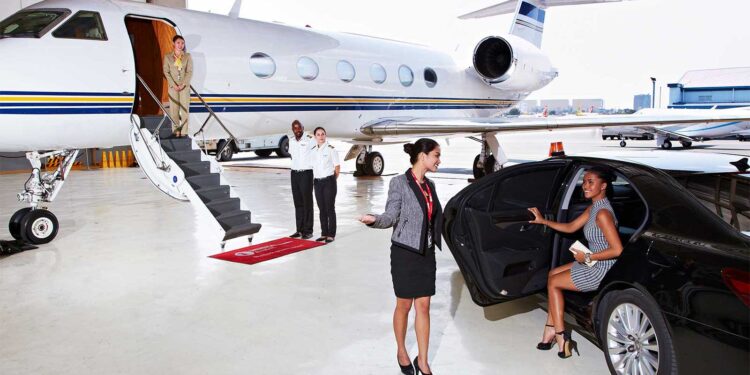Operating to RPLL – Part 1: Airport & Operating Considerations

This is a post by author Rubie Sobremonte. Rubie is the Customer Service Manager at Universal Aviation Philippines, which has an aircraft ground handling facility in Manila. Rubie is an expert on business aircraft operations in the Philippines and can be contacted at rubiesobremonte@univ-wea.com.
This business aviation blog post is part of a series on operations to Manila, Philippines.
Manila is a popular destination for business and leisure purposes and attracts a steady flow of general aviation (GA) activity. While aircraft parking is generally not an issue at Manila (RPLL), there are a number of operating considerations to be mindful of.
The following is an overview of what you need to know:
1. General airport considerations
RPLL is a 24-hour airport of entry (AOE) with 24/7 CIQ availability, on prior notice. Note that GA is banned 0400-1100 UTC daily, but air ambulance and humanitarian flights are exempted from these restrictions. Runways and taxiways are in good condition although there are continuous upgrades/improvements being made to airport infrastructure. The airport closes runway 06/24 daily (except Thursday) 1730-1930 UTC due to maintenance work in progress. While there are no Stage 2 noise restrictions or bans at this airfield, there are noise abatement procedures provided in the Aeronautical Information Publication (AIP) that operators must follow. Peak operating hours at RPLL are 0700-2200 local.
2. Filing flight plans
Unless your ground handler is a licensed dispatcher, the pilot in command (PIC) will need to personally visit the briefing office to file the flight plan. In cases where the handler is a licensed dispatcher, flight plans may be filed without the PIC’s presence but the PIC’s license number and expiration date must always be placed in remarks section 18 of the flight plan.
3. Payment of airport charges
There are separate charges to pay for immigration and customs services and these charges are paid on both arrival and departure. Note that customs, immigration and quarantine (CIQ) fees must be settled in cash. These fees vary depending upon the number of people onboard. If credit is arranged in advance, your handler will pay CIQ fees in cash and bill you at a later time.
4. Fuel uplifts
Fuel uplifts at RPLL are available by either hydrant or fuel truck. Hydrant fuel is available at Terminal 1 and Terminal 3 while truck delivery is the only option in Terminal 4 and GA parking areas. We recommend that operators uplift fuel upon arrival, when practical, to avoid potential departure delays. For fuel uplifts on departure advance notice is needed and quantity should be advised. Due to busy scheduled commercial activity fuel uplift delays are somewhat common and fuelers should always be notified at least 30 minutes prior to avoid delays.
5. Parking and hangar options
There’s limited ramp and hangar parking availability at RPLL for GA and no overflow parking areas have been designated. Hangar space is possible for transient operations but this must be requested in advance. Particularly when large events are taking place in the area GA parking is at a premium and there will be times when you’ll need to drop off/ pick up and reposition. It may be possible to park on the military side of the airfield if you’re a diplomatic or other type of qualifying flight. However, this involves submitting a request in advance with all aircraft, operator, crew and passenger, and ground handler details. We suggest that operators traveling to RPLL bring their own tow bar. There are limited ground support equipment (GSE) options on the field, but certain items may be available for rent and your ground handler will coordinate this.
6. Airport and off-airport security options
It’s possible to arrange security guards for your aircraft at RPLL. However, your ground handler must submit a coordination letter and obtain approval from the airport authorities and these guards must be unarmed. Advance notice for aircraft security requests is recommended so appropriate permissions can be obtained. Note that firearms are highly restricted in the Philippines and local security providers may not be able to offer armed protection services off airport. Be aware that foreign operators may not bring weapons into the country. Any weapons onboard must be declared and obtain necessary clearances from all concerned government and airport authorities prior to operations.
7. Ramp operations
If you need to move your aircraft from one parking spot to another, a letter to airport authorities requesting permission must first be sent. If your request is approved, airport personnel will be present to ensure safety and monitor the move. For repositioning at RPLL it’s permissible to taxi or be towed from one spot to another.
8. Local considerations
Good quality crew accommodations, including major international hotel chains, are available in the Manila area. Normal rates for 4-star crew rooms run about 200-250 USD per night. When traveling in Manila it’s best to use prepaid (car with driver) transport as public taxis are not considered secure.
Conclusion
It’s important to arrange all required services and fuel uplifts well in advance of operation into RPLL in order to ensure timely handling and fuel delivery. Fuel uplifts at this location can be a primary cause for operational delays. Note that for large events parking may not be available for your operation, thus requiring a drop and go.
Stay tuned for Part 2, which covers information on permits, customs, immigration, and slots for operations to Manila, Philippines.
Questions?
If you have any questions about this article or would like assistance planning your next trip to the Philippines, contact me at rubiesobremonte@univ-wea.com.




